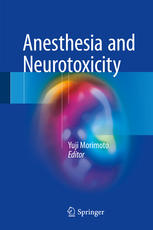Description
“Anesthesia Outside of the Operating Room” refers to the administration of anesthesia services in locations other than traditional operating rooms. Anesthesia providers are often required to deliver care in various settings to ensure patient comfort, safety, and optimal conditions for medical procedures. Here are key points related to anesthesia outside of the operating room:
- Locations:
- Anesthesia outside the operating room can occur in a variety of settings, including interventional radiology suites, endoscopy units, cardiac catheterization labs, MRI suites, and even non-medical locations for procedures requiring sedation.
- Procedures:
- Anesthesia may be needed for a range of procedures, such as interventional radiology interventions, endoscopic examinations, cardiac catheterizations, diagnostic imaging, and pain management procedures.
- Patient Population:
- Patients undergoing procedures outside of the operating room can include individuals of all ages and medical conditions. Specialized care may be required for pediatric patients or those with complex medical histories.
- Anesthesia Techniques:
- Anesthesia providers use various techniques, including conscious sedation, monitored anesthesia care, and general anesthesia, depending on the nature of the procedure and patient’s medical condition.
- Monitoring:
- Continuous monitoring of patients during procedures is essential to ensure their safety and comfort. This includes tracking vital signs, oxygen saturation, and the patient’s level of consciousness.
- Emergency Preparedness:
- Anesthesia providers must be prepared to manage emergencies that can arise during procedures outside the operating room, including airway and cardiovascular issues.
- Interdisciplinary Collaboration:
- Collaboration with other healthcare professionals, including radiologists, gastroenterologists, interventional cardiologists, and nurses, is crucial to ensuring coordinated patient care.
- Equipment and Technology:
- Anesthesia providers work with specialized equipment and technologies tailored to the unique demands of the specific procedural environment.
- Patient Communication:
- Clear and effective communication with patients is important, particularly when patients may be conscious and experiencing discomfort during procedures.
- Informed Consent:
- Ensuring that patients or their caregivers understand the anesthesia plan and any potential risks is a key aspect of care provided outside of the operating room.
- Regulatory Guidelines:
- Regulatory agencies and professional organizations provide guidelines and standards for delivering anesthesia outside the operating room to ensure patient safety.
- Transportation and Recovery:
- Patients may require transportation to and from the procedure area, as well as post-procedural recovery and monitoring, which can occur in specialized recovery areas.
Anesthesia outside of the operating room reflects the evolving landscape of medical procedures and the need for specialized anesthesia care in diverse clinical settings. Anesthesia providers who deliver care in these settings must adapt their skills and expertise to ensure safe and effective patient care during a wide range of medical procedures.





Reviews
There are no reviews yet.